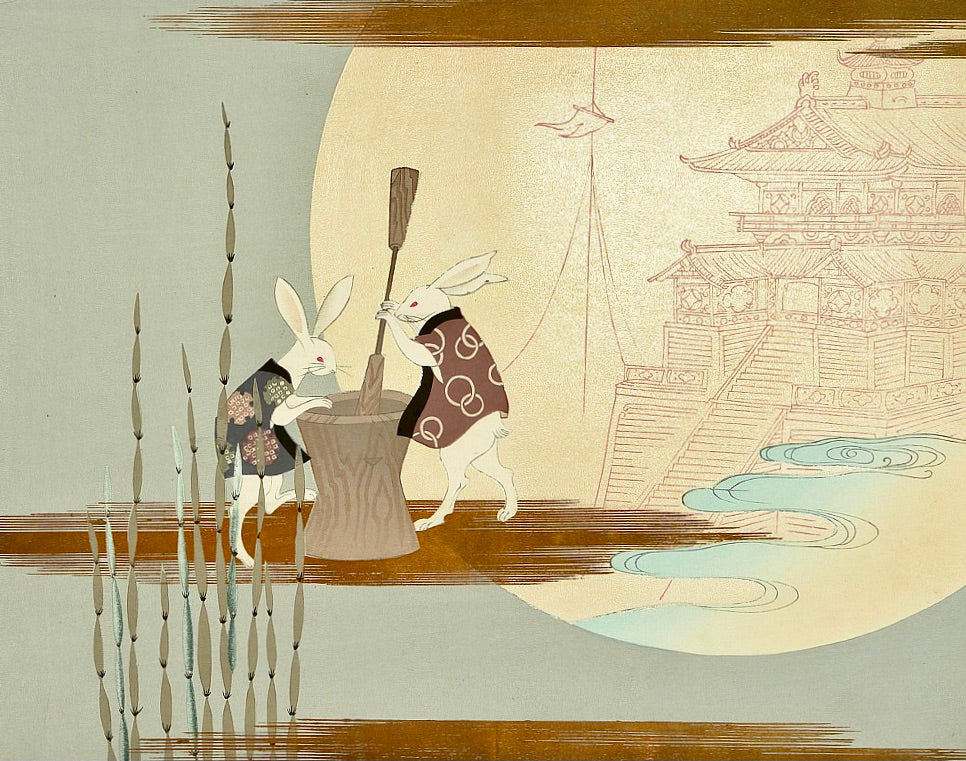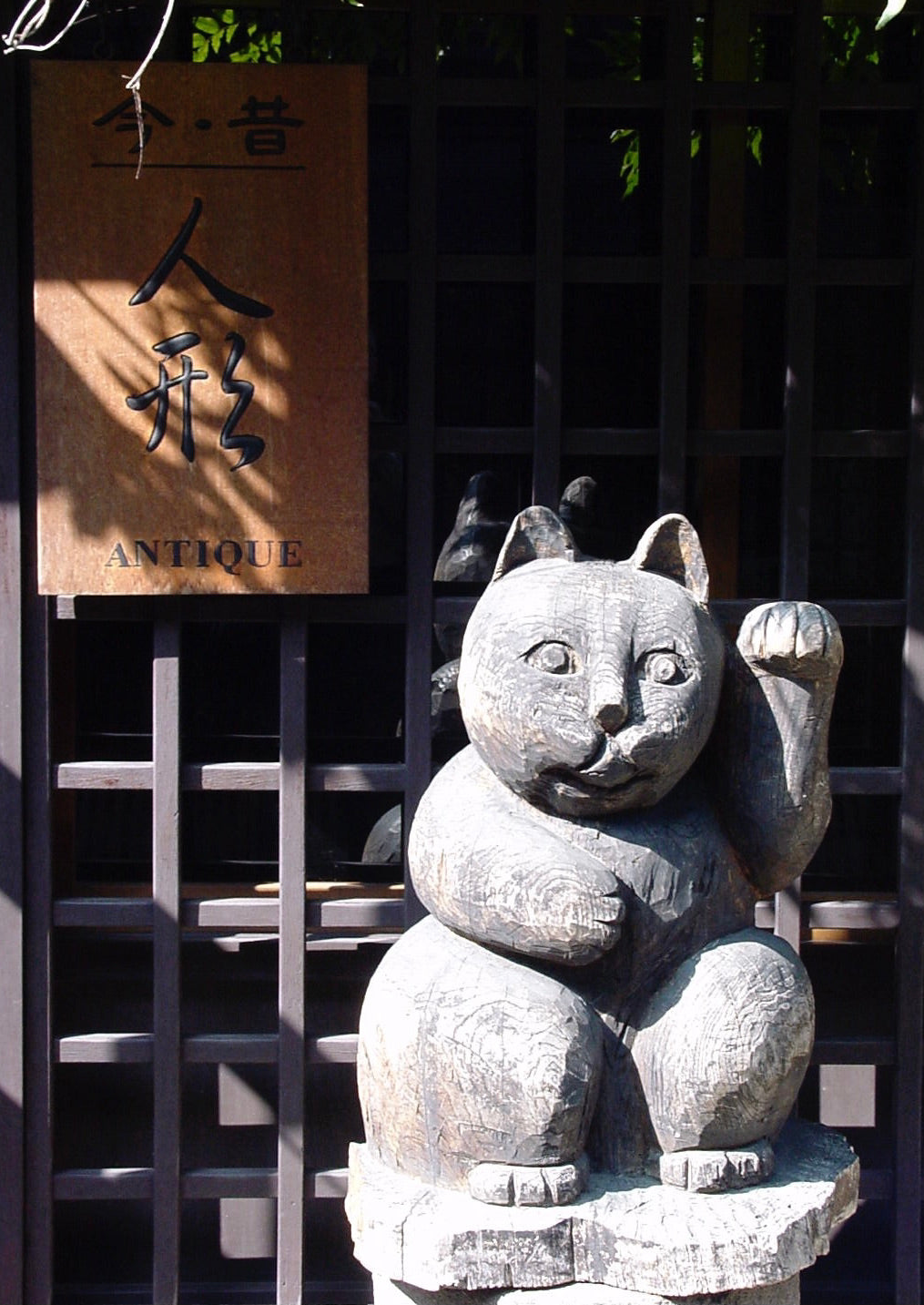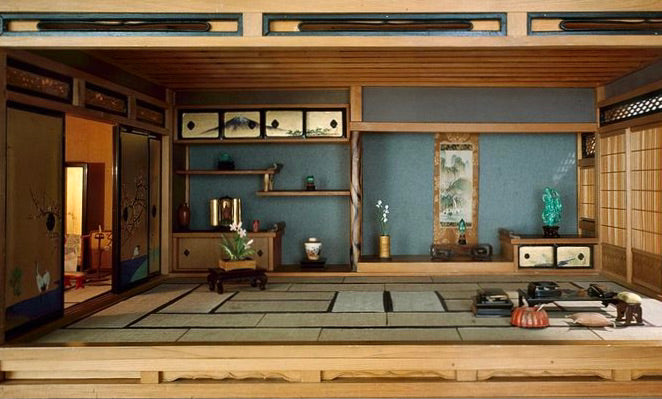The Japanese Folklore about the Rabbit and Its Relationship to the Moon
According to legend, an old man who lived on the moon decided to visit Earth. A group of animals saw what they thought was an old beggar who was starving. “Poor beggar, he looks hungry and has no food. Let us give him some food”. First, the monkey plucked some fruit from the trees. He brought the fruits and laid them in front of the old beggar. Next, the otter collected some fish and brought it to the old beggar. The jackal was too lazy to find something that the beggar could eat, so he caught the first animal he could - a lizard, and placed it in front of the old beggar, along with some water. The rabbit did not know what to get for the old beggar. He was not good at catching animals or fish, nor could he scale trees and get fruit. He only knew how to gather grass, but humans didn’t eat grass. He sat in a corner unhappy. Suddenly he remembered that humans like to eat meat. So he got up happily, prepared a fire and jumped into it. The fire did not burn the rabbit! The old man revealed himself to be Sakra, the ruler of Gods. “You have been very kind and selfless.” he said to the rabbit. Touched by the rabbit’s selflessness and virtue, he drew the likeness of the rabbit on the moon. “Henceforth, for all ages, all those who will look at the moon, will see your shape in it and remember your kindness.
The rabbit, as well as the hare, have long been associated with moon deities, and may signify rebirth or resurrection. They may also be symbols of fertility or sensuality, and they appear depicted in all forms of Japanese two-and-three-dimensional art, children’s books, and food, e.g.; (Mochi and the practice of Otsukimi, meaning admiring the mid-autumn moon with farmers and restaurant workers praying for a bountiful harvest). This practice continues to this day, and it is the answer to the question why Usagi and the Japanese culture became friends.
Usagi: Ceramics

So, with this legend in mind, the Japanese began to make and collect Usagi in all shapes, materials and forms. Pottery, porcelain, washi paper, textiles, glass, lacquer, dolls, works on paper, and Ittobori wood carvings are seen. The hare, as it is related to the moon, is usually depicted as white, (albino Japanese hare). Japanese artists, and particularly potters and wood carvers, clearly understand the curious and affectionate nature of rabbits doing all forms of gestures, as if in the wild.
Usagi: Wood Creations

Usagi: Textile Art

Usagi: Multi-Media

Usagi: Works on Paper

Tsukimi, (Tsukimi or Otsukimi, meaning, "moon-viewing"), also known as Jugoya, are Japanese festivals honoring the autumn moon, it was first celebrated during the Nara period, (710-794 AD), but it wasn't until the Heian period, (794-1185), that it became popular among aristocrats. They would admire the moon's reflection in the water and read Tanka poetry under the moonlight. These celebrations continue today.
Japanese people celebrate Tsukimi with their families, watching the moon and enjoying mochi or tsukimi dango, (a special pyramid display of mochi). There are more than ten different kinds of Mochi, all believed to be prepared by Usagi, the Rabbit on the Moon. Today the Mochi being eaten for Tsukimi have to be special, and are typically served with other popular Tsukimi foods such as chestnuts, pumpkin, soba, and udon noodles. The Japanese room is usually decorated with Susuki, (Japanese pampas grass or silver grass). Men believe that the silver grass will protect the house from evil.
As you remember the story about the Rabbit Pounding Mochi on the Moon, as he prepares for Tsukimi celebrations, you will understand why the Japanese people enjoy Mochi, Tsukimi dango, and the countrey's wonderful folk lore during these festivals.




